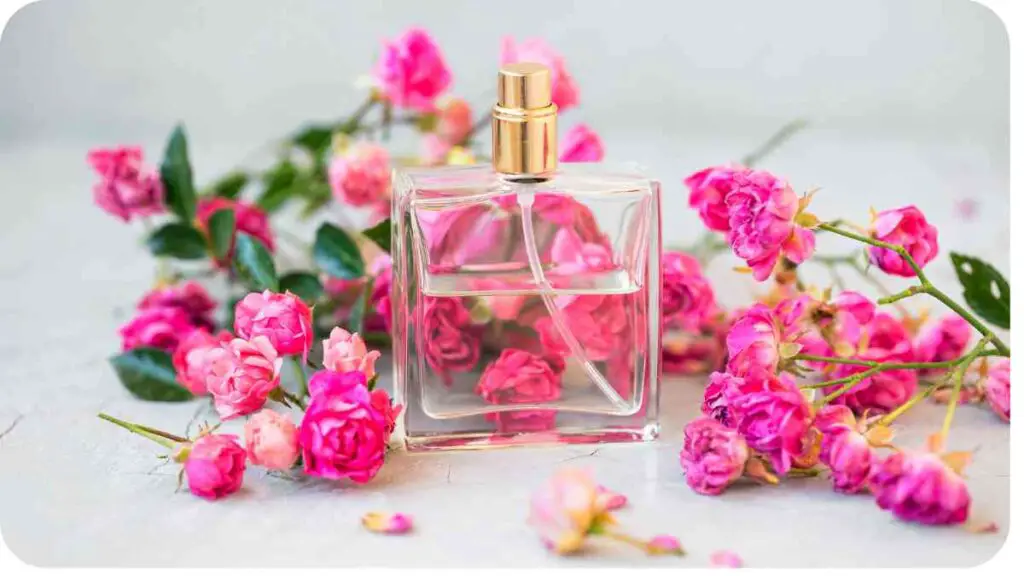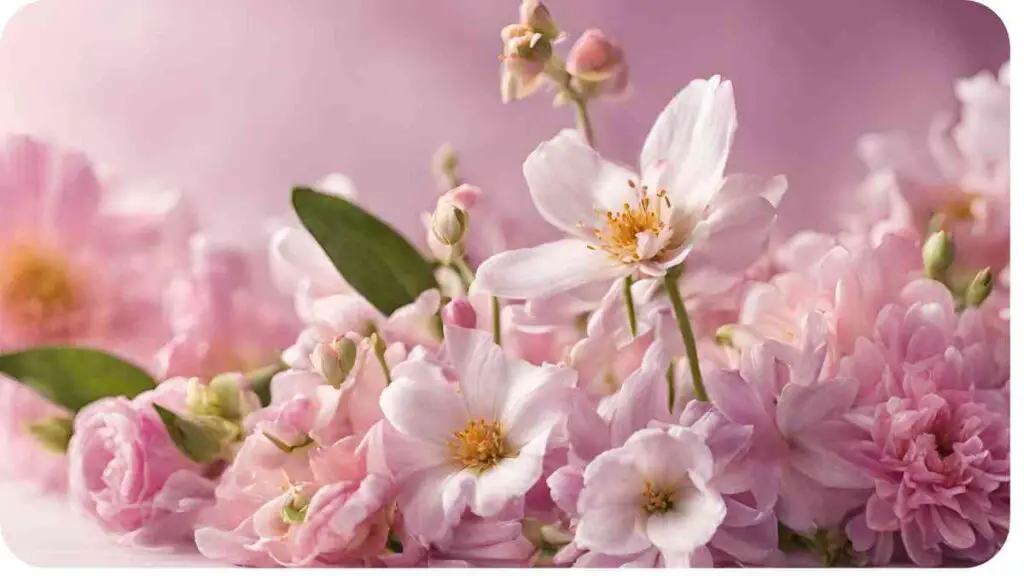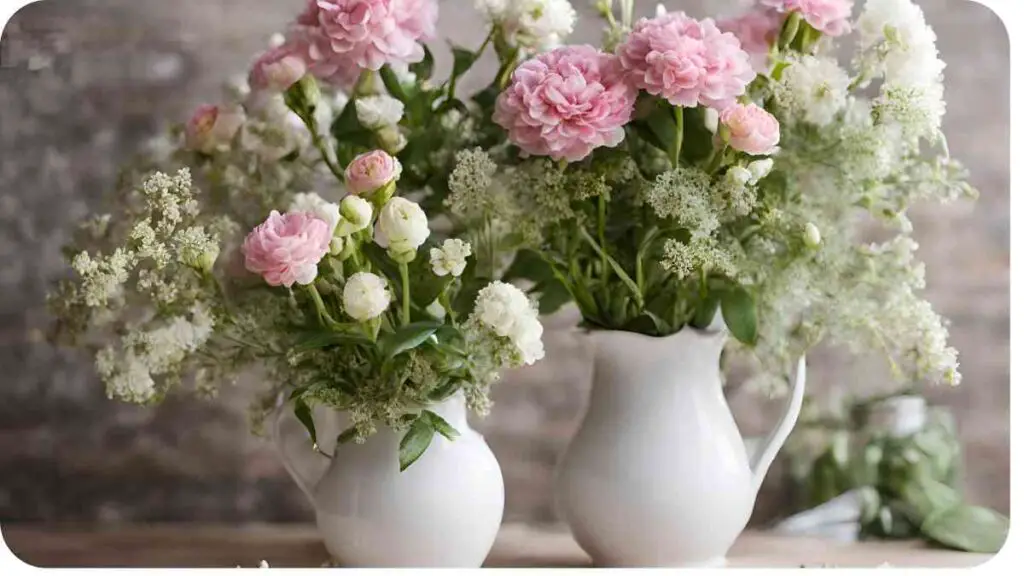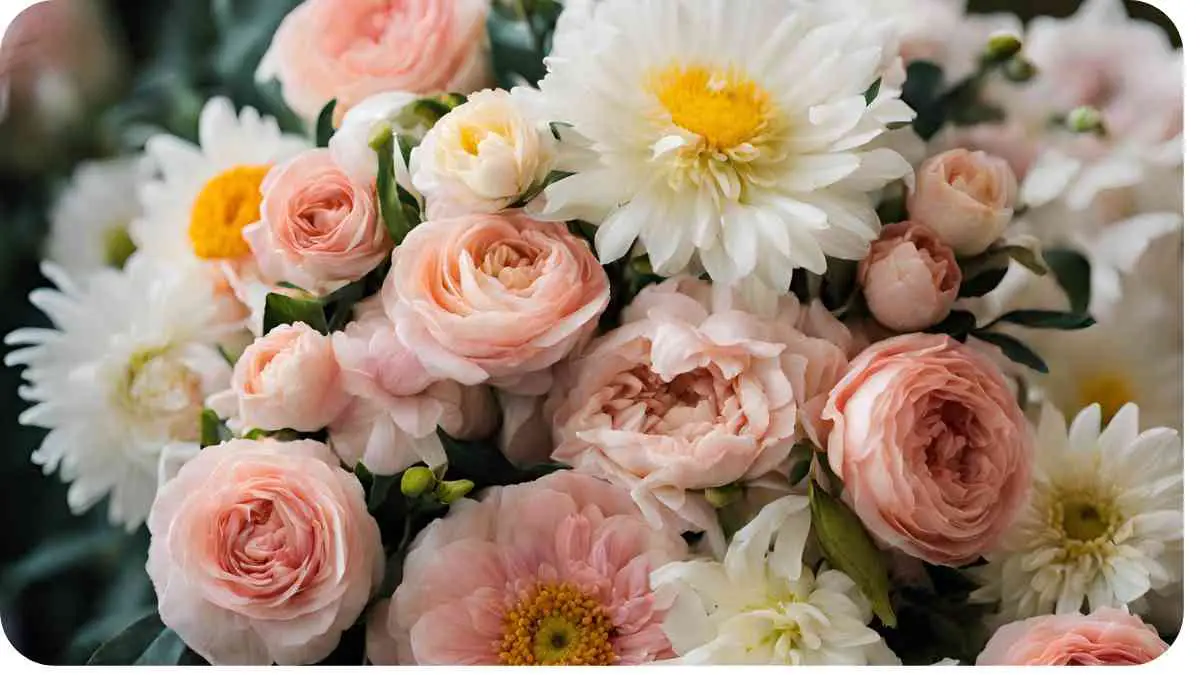Who doesn’t love the sweet, intoxicating scent of flowers? The allure of fragrant blooms can transform any space, whether it’s a bustling garden, a cozy living room, or a romantic wedding venue. In this guide, we’ll explore the wonderful world of fragrant flowers, from popular favorites to tips on how to grow and enjoy them to the fullest.
| Takeaways |
|---|
| 1. Fragrant flowers add a delightful sensory dimension to gardens, homes, and special occasions. |
| 2. Understanding factors like climate, soil, and sunlight is crucial for successfully growing fragrant flowers. |
| 3. Fragrant flowers offer numerous health benefits, including stress relief and improved sleep. |
| 4. Incorporating fragrant flowers into DIY projects like perfumes and candles allows you to enjoy their scent indoors. |
| 5. Exploring further resources and FAQs can enhance your knowledge and enjoyment of fragrant flowers. |
Why Fragrance Matters in Flowers

The fragrance of flowers isn’t just a pleasant bonus it’s a key component of their allure. Imagine a rose without its signature scent or a jasmine vine without its sweet aroma. Fragrance adds depth and character to flowers, enhancing our sensory experience and often evoking nostalgic memories. Moreover, fragrant flowers play a crucial role in pollination, attracting bees, butterflies, and other pollinators essential for the reproduction of many plant species.
Imagine a perpetual floral symphony, where blossoms bloom all year round, painting the landscape with vibrant colors and fragrances. Experience this timeless parade of petals, celebrating nature’s towering blooms in all their glory.
Popular Fragrant Flowers
Roses
Table: Fragrance Intensity of Different Rose Varieties
| Rose Variety | Fragrance Intensity (1-5) |
|---|---|
| Damask Rose | 5 |
| Tea Rose | 4 |
| Floribunda | 3 |
| Climbing Rose | 4 |
Roses are synonymous with romance, and their intoxicating scent is legendary. From the old-world charm of Damask roses to the modern allure of hybrid tea varieties, there’s a rose fragrance to suit every preference.
Jasmine
Table: Jasmine Varieties and Their Fragrance Profiles
| Jasmine Variety | Fragrance Profile |
|---|---|
| Arabian Jasmine | Sweet, Floral, Slightly Spicy |
| Star Jasmine | Intensely Sweet, Floral |
| Confederate Jasmine | Rich, Sweet, Slightly Woody |
Jasmine’s delicate white flowers release a heady, sweet fragrance that fills the air with its unmistakable scent, especially in the evenings.
Lavender
Table: Lavender Varieties and Their Fragrance Profiles
| Lavender Variety | Fragrance Profile |
|---|---|
| English Lavender | Sweet, Herbaceous, Floral |
| French Lavender | Intense, Herbal, Woody |
| Spanish Lavender | Spicy, Aromatic, Medicinal |
Lavender’s calming aroma is beloved for its ability to promote relaxation and tranquility. It’s a staple in aromatherapy and herbal remedies.
Gardenia
Table: Gardenia Varieties and Their Fragrance Intensity
| Gardenia Variety | Fragrance Intensity (1-5) |
|---|---|
| Gardenia augusta | 5 |
| Gardenia jasminoides | 4 |
| Gardenia thunbergia | 3 |
How Fragrance Works in Flowers

Chemical Compounds
The captivating scents emitted by flowers are the result of complex chemical compounds known as volatile organic compounds (VOCs). These VOCs are released by specialized glands located in the petals and other floral parts. Each flower species produces a unique blend of VOCs, which gives rise to its distinctive fragrance profile.
In moments of solace and remembrance, flowers offer solace and express sentiments when words fail. Explore the delicate art of floral condolences, selecting the best flowers to send for condolences to convey sympathy and support during difficult times.
Environmental Factors
Environmental conditions such as temperature, humidity, and light intensity can influence the production and release of floral fragrances. For example, some flowers emit stronger scents in the evening to attract nocturnal pollinators, while others may release more fragrance on sunny days when pollinator activity is high.
Choosing Fragrant Flowers for Your Garden
When selecting fragrant flowers for your garden, consider factors such as climate, soil quality, and sunlight exposure to ensure optimal growth and fragrance production.
Climate Considerations
Table: Fragrant Flowers Suitable for Different Climates
| Climate Zone | Fragrant Flowers |
|---|---|
| Tropical | Plumeria, Frangipani, Ylang Ylang |
| Temperate | Lilac, Hyacinth, Sweet Pea |
| Mediterranean | Rosemary, Sage, Citrus Blossoms |
Choose flowers that are well-suited to your local climate to ensure they thrive and produce abundant blooms with rich fragrances.
Soil Requirements
Table: Soil pH Preferences of Fragrant Flowers
| Flower | Soil pH Range |
|---|---|
| Roses | 6.0-7.0 |
| Lavender | 6.5-7.5 |
| Gardenias | 5.0-6.0 |
Maintain the optimal soil pH for your chosen fragrant flowers to promote healthy root development and nutrient uptake.
As winter’s chill melts away, herald the arrival of spring with a vibrant bouquet of tulips, a celebration of nature’s renewal. Embrace the joy and beauty of the season with a tulip bouquet that symbolizes new beginnings and rejuvenation.
Sunlight Needs
Table: Sunlight Requirements of Fragrant Flowers
| Flower | Sunlight Needs |
|---|---|
| Jasmine | Full Sun to Partial Shade |
| Lilac | Full Sun |
| Sweet Alyssum | Full Sun to Partial Shade |
Provide adequate sunlight for your fragrant flowers, ensuring they receive the necessary light for robust growth and abundant blooming.
Tips for Growing Fragrant Flowers Successfully
Growing fragrant flowers can be a rewarding experience, but it requires attention to detail and proper care to ensure your plants thrive and produce their signature scents.
Proper Planting Techniques
Table: Planting Depth and Spacing for Fragrant Flowers
| Flower | Planting Depth | Spacing |
|---|---|---|
| Roses | 12-18 inches | 18-24 inches apart |
| Lavender | Surface Sow | 12-18 inches apart |
| Gardenias | Same as Pot Depth | 3-5 feet apart |
Follow recommended planting depths and spacing guidelines to give your fragrant flowers ample room to grow and develop strong root systems.
Regular Maintenance
Table: Maintenance Tasks for Fragrant Flowers
| Task | Frequency |
|---|---|
| Watering | 1-2 times per week |
| Fertilizing | Monthly during growing season |
| Pruning | After flowering season |
Provide consistent care by watering, fertilizing, and pruning your fragrant flowers as needed to promote healthy growth and abundant blooming.
Pest and Disease Management
Table: Common Pests and Diseases of Fragrant Flowers
| Pest/Disease | Symptoms | Treatment |
|---|---|---|
| Aphids | Sticky residue on leaves | Insecticidal soap spray |
| Powdery Mildew | White powdery patches | Fungicide application |
| Spider Mites | Fine webbing on leaves | Neem oil spray |
Monitor your fragrant flowers regularly for signs of pests and diseases, and take appropriate measures to prevent and manage infestations.
Using Fragrant Flowers in Indoor Spaces

Bringing the delightful scent of fragrant flowers indoors is a wonderful way to enhance your home’s ambiance and create a welcoming atmosphere. Here are some creative ways to enjoy the fragrance of your favorite blooms inside your home.
Step beyond traditional bouquets and explore the artistry of unique floral arrangements that captivate the senses and ignite the imagination. Discover the boundless creativity and elegance of thinking outside the bouquet box, where each arrangement tells a story of innovation and sophistication.
Floral Arrangements
Table: Fragrant Flowers Suitable for Floral Arrangements
| Flower | Fragrance Profile | Best Combinations |
|---|---|---|
| Roses | Sweet, Floral | Baby’s Breath, Eucalyptus |
| Jasmine | Intensely Sweet, Floral | Gardenia, Lily |
| Lavender | Sweet, Herbaceous | Rosemary, Sage |
Create stunning floral arrangements using fragrant flowers to add a touch of elegance and fragrance to any room in your home.
Potpourri
Table: Ingredients for Homemade Potpourri
| Ingredient | Fragrance Profile |
|---|---|
| Dried Rose Petals | Sweet, Floral |
| Lavender Buds | Sweet, Herbaceous |
| Citrus Peel | Fresh, Citrusy |
| Cinnamon Sticks | Warm, Spicy |
Make your own potpourri using dried fragrant flowers and aromatic spices to infuse your home with a natural, long-lasting scent.
Essential Oils
Table: Fragrant Flowers Used for Essential Oil Production
| Flower | Essential Oil Benefits |
| Lavender | Relaxation, Stress Relief |
| Rose | Mood Enhancement, Skin Care |
| Eucalyptus | Respiratory Health, Decongestion |
Harness the therapeutic benefits of fragrant flowers by diffusing their essential oils or adding them to homemade beauty and wellness products.
Fragrant Flowers for Different Occasions
Whether you’re celebrating love, honoring a loved one, or marking a special milestone, fragrant flowers can add a touch of beauty and elegance to any occasion.
Weddings
Table: Fragrant Flowers for Wedding Bouquets
| Flower | Symbolism |
|---|---|
| Roses | Love, Romance |
| Lily of the Valley | Purity, Happiness |
| Freesia | Trust, Friendship |
| Stephanotis | Marital Happiness |
Create stunning bridal bouquets and floral arrangements using fragrant flowers to infuse your wedding day with romance and charm.
Funerals
Table: Fragrant Flowers for Funeral Wreaths
| Flower | Symbolism |
|---|---|
| Lilies | Sympathy, Peace |
| Carnations | Remembrance, Love |
| Chrysanthemums | Resilience, Honor |
| Hyacinths | Sincerity, Compassion |
Express your condolences and honor the memory of a loved one with fragrant flowers that convey comfort and solace.
Preserve the vibrant hues and delicate beauty of freshly cut flowers with homemade flower preservatives, ensuring they remain a vibrant addition to any space. Learn the secrets to extending cut flowers’ vibrant life and enjoy their blossoms for days to come.
Special Events
Table: Fragrant Flowers for Special Events
| Flower | Occasion |
|---|---|
| Gardenias | Anniversary Celebrations |
| Jasmine | Engagement Parties |
| Lavender | Baby Showers |
| Sweet Pea | Birthday Parties |
Elevate your special events with fragrant flowers that captivate the senses and create lasting memories for you and your guests.
DIY Fragrance Projects
Get creative and explore the aromatic world of fragrant flowers with these fun and easy DIY projects that will fill your home with delightful scents.
Homemade Perfume
Table: Ingredients for DIY Floral Perfume
| Ingredient | Fragrance Profile |
|---|---|
| Vodka | Neutral Base |
| Fragrant Flowers | Floral, Sweet |
| Essential Oils | Enhance Fragrance |
| Carrier Oil | Adds Depth |
Create your own signature scent by combining fragrant flowers, essential oils, and other natural ingredients to make a personalized perfume that reflects your unique style.
Scented Candles
Table: Fragrant Flower Candle Making Supplies
| Supply | Purpose |
|---|---|
| Soy Wax | Candle Base |
| Fragrance Oils | Scent Enhancement |
| Dried Flowers | Decorative Element |
| Candle Jars | Container for Candles |
Craft beautiful scented candles using fragrant flowers and essential oils to create a warm and inviting ambiance in your home.
Flower Water
Table: Ingredients for DIY Flower Water
| Ingredient | Purpose |
|---|---|
| Distilled Water | Base |
| Fragrant Flowers | Infuse Fragrance |
| Witch Hazel | Preservative |
| Aloe Vera Gel | Soothing Agent |
Make your own refreshing flower water spray using fragrant flowers and natural ingredients to hydrate and revitalize your skin.
Health Benefits of Fragrant Flowers
Beyond their delightful scents and aesthetic appeal, fragrant flowers offer a range of health benefits, making them valuable additions to your home and daily routine.
Aromatherapy
Table: Fragrant Flowers Used in Aromatherapy
| Flower | Benefits of Aromatherapy |
|---|---|
| Lavender | Relaxation, Anxiety Relief |
| Rose | Mood Enhancement, Stress Reduction |
| Jasmine | Sleep Aid, Mood Elevation |
Harness the power of aromatherapy by diffusing essential oils derived from fragrant flowers to promote relaxation, improve mood, and alleviate stress and anxiety.
Stress Relief
Table: Fragrant Flowers for Stress Relief
| Flower | Stress-Relieving Properties |
|---|---|
| Lavender | Calming, Soothing |
| Chamomile | Relaxing, Sedative |
| Ylang Ylang | Balancing, Uplifting |
Surround yourself with the soothing scents of fragrant flowers to reduce stress levels and promote a sense of calm and tranquility in your daily life.
Improved Sleep
Table: Fragrant Flowers for Better Sleep
| Flower | Sleep-Inducing Properties |
|---|---|
| Lavender | Promotes Relaxation, Induces Sleep |
| Chamomile | Calms Nerves, Enhances Sleep Quality |
| Valerian | Sedative, Improves Sleep Onset |
Create a restful sleep environment by incorporating fragrant flowers into your bedtime routine to help you relax, unwind, and enjoy a deeper, more restorative sleep.
Common FAQs about Fragrant Flowers
As you embark on your journey to grow and enjoy fragrant flowers, you may have questions about their care, longevity, and suitability for different environments. Here are some frequently asked questions along with helpful answers to guide you.
How long do fragrant flowers last?
Fragrant flowers vary in their lifespan depending on factors such as the species, growing conditions, and care provided. Generally, cut flowers can last anywhere from a few days to a couple of weeks with proper care, while flowers grown in gardens may bloom for several weeks or even months during the growing season.
Can I grow fragrant flowers indoors?
Yes, many fragrant flowers can be grown indoors, provided they receive adequate sunlight, water, and proper care. Choose compact varieties suited to indoor environments and ensure they are planted in well-draining soil with sufficient nutrients. Additionally, consider using containers with good drainage to prevent waterlogging and root rot.
What are some low-maintenance fragrant flowers?
Several fragrant flowers are known for their resilience and adaptability, making them ideal choices for low-maintenance gardens. Some examples include:
- Marigolds: These cheerful flowers are easy to grow and produce a distinctive, spicy fragrance.
- Sweet Alyssum: With its delicate white blooms and honey-like scent, sweet alyssum is a popular choice for borders and containers.
- Dianthus: Also known as pinks, dianthus flowers come in various colors and emit a spicy, clove-like fragrance.
Are fragrant flowers suitable for all climates?
While many fragrant flowers thrive in temperate climates, there are also options available for tropical, Mediterranean, and subtropical regions. Be sure to research the specific climate requirements of each flower species and choose varieties that are well-suited to your local conditions.
Conclusion
Fragrant flowers add a delightful sensory dimension to any garden, home, or special occasion. From the timeless elegance of roses to the exotic allure of jasmine, there’s a fragrant flower to suit every taste and preference. By understanding the factors that contribute to fragrance production and following best practices for growing and enjoying fragrant flowers, you can create a beautiful and aromatic oasis that delights the senses and lifts the spirit.
Whether you’re seeking to create a serene outdoor retreat, infuse your home with natural fragrance, or simply brighten someone’s day with a bouquet of fragrant blooms, the possibilities are endless. With a bit of knowledge, creativity, and tender loving care, you can experience the joy and beauty of fragrant flowers in all their splendor.
So go ahead, immerse yourself in the world of fragrant flowers, and let their enchanting scents transport you to a place of tranquility, beauty, and bliss.
Thank you for joining us on this fragrant journey. Happy gardening and may your days be filled with the sweet aroma of nature’s most exquisite creations!
Further Reading
For more information and inspiration on fragrant flowers, check out these helpful resources:
- Real Simple: Best Smelling Flowers
- Explore a curated list of the best smelling flowers for your garden, along with tips on how to grow and care for them.
- Fine Gardening: Heavenly Scents – Fragrant Plants and Flowers
- Discover a variety of fragrant plants and flowers that will fill your garden with heavenly scents, from classic favorites to lesser-known gems.
- Country Living: Best Fragrant Outdoor Plants
- Learn about the best fragrant outdoor plants for your landscape, including flowering shrubs, vines, and perennials that will add fragrance and beauty to your outdoor space.
FAQs
How can I enhance the fragrance of my garden?
- Plant fragrant flowers in clusters or drifts to create a stronger scent impact.
- Choose flowers with different blooming times to enjoy continuous fragrance throughout the growing season.
Are there any fragrant flowers that attract butterflies and bees?
- Yes, many fragrant flowers, such as lavender, rosemary, and bee balm, are attractive to pollinators like butterflies and bees.
Can I grow fragrant flowers indoors?
- Yes, several fragrant flowers, such as jasmine, gardenia, and citrus blossoms, can be grown indoors with proper care and sunlight.
How do I preserve the fragrance of cut flowers?
- Trim stems at an angle and place them in clean water with floral preservative.
- Change the water every few days and trim the stems to maintain freshness and fragrance.
What are some fragrant flowers that bloom at night?
- Night-blooming jasmine, tuberose, and moonflower are examples of fragrant flowers that release their scent in the evening to attract nocturnal pollinators.

I am Hellen James, a landscape architect. For many years I have written about landscaping for various publications; however, recently decided to focus my writing on personal experience as a profession.

